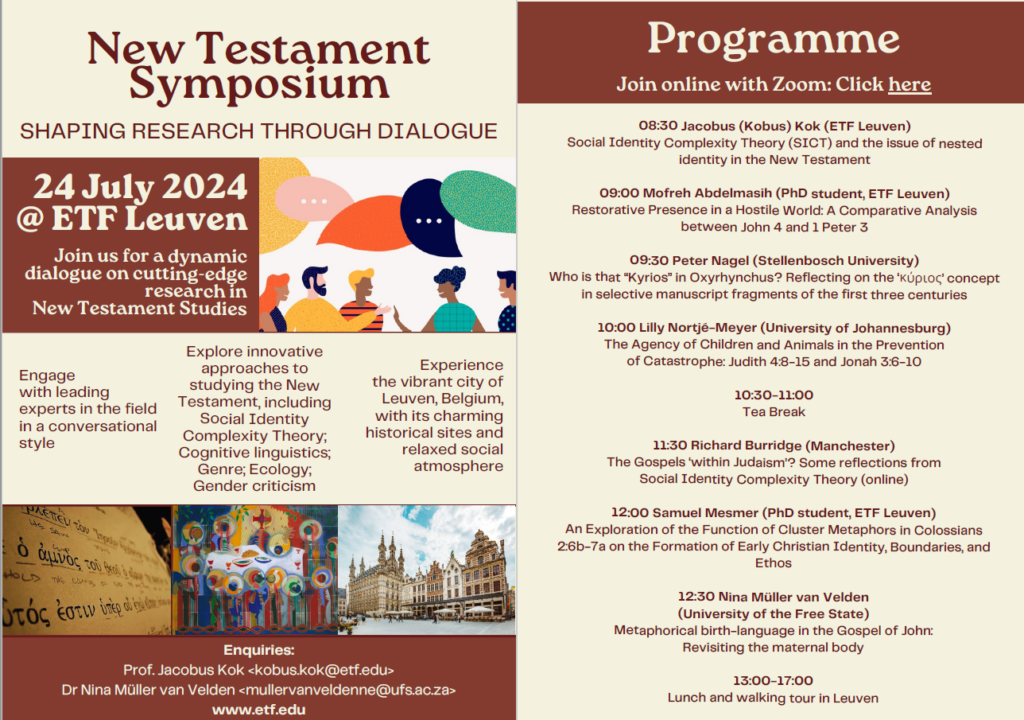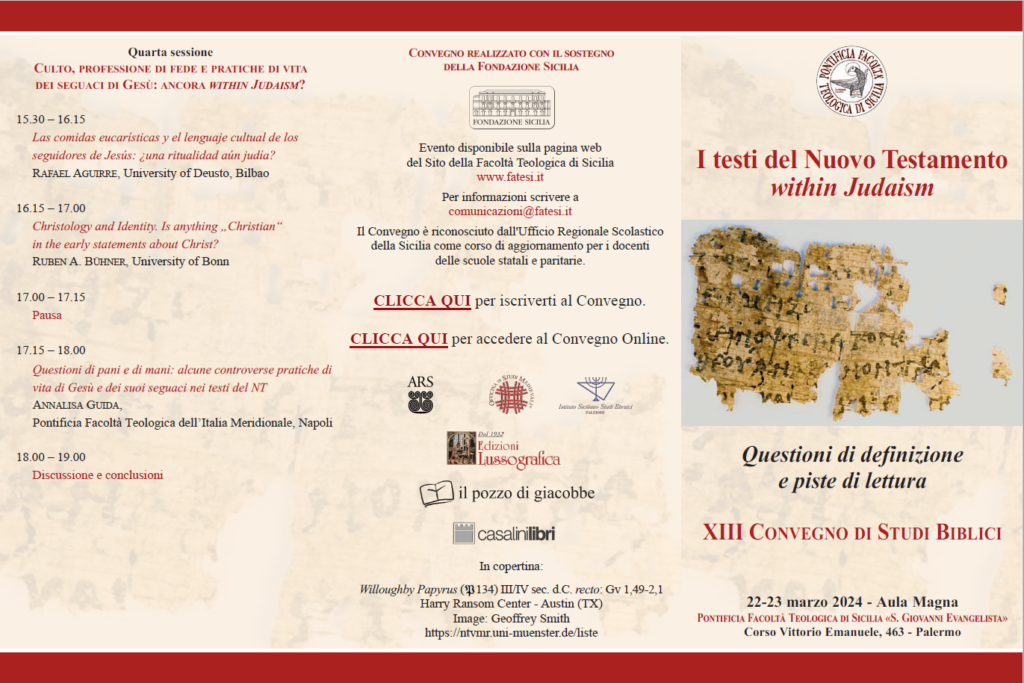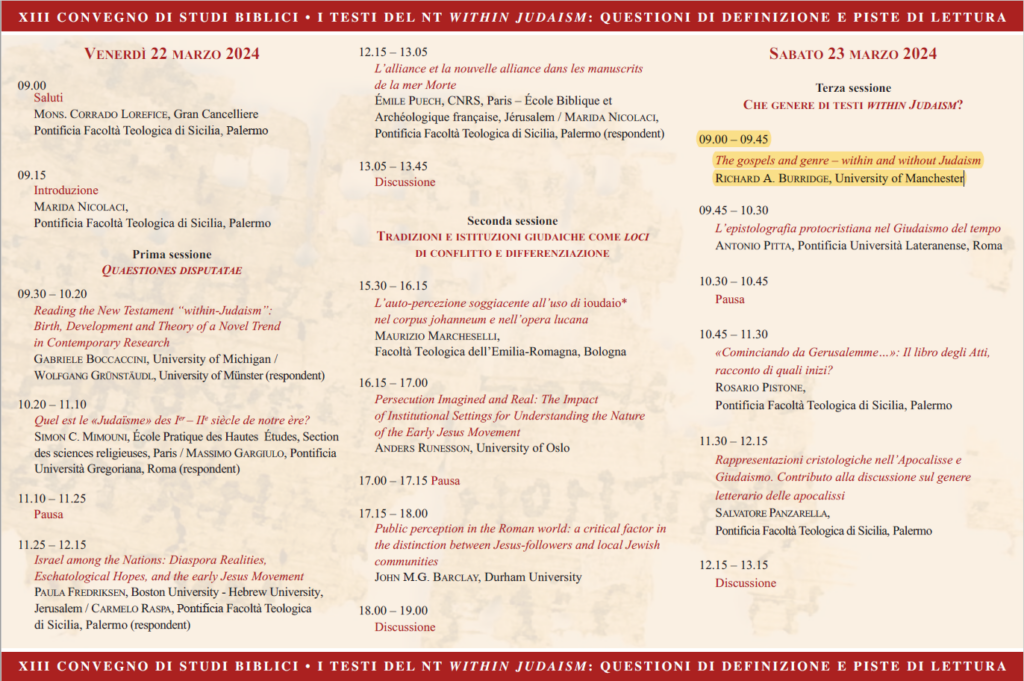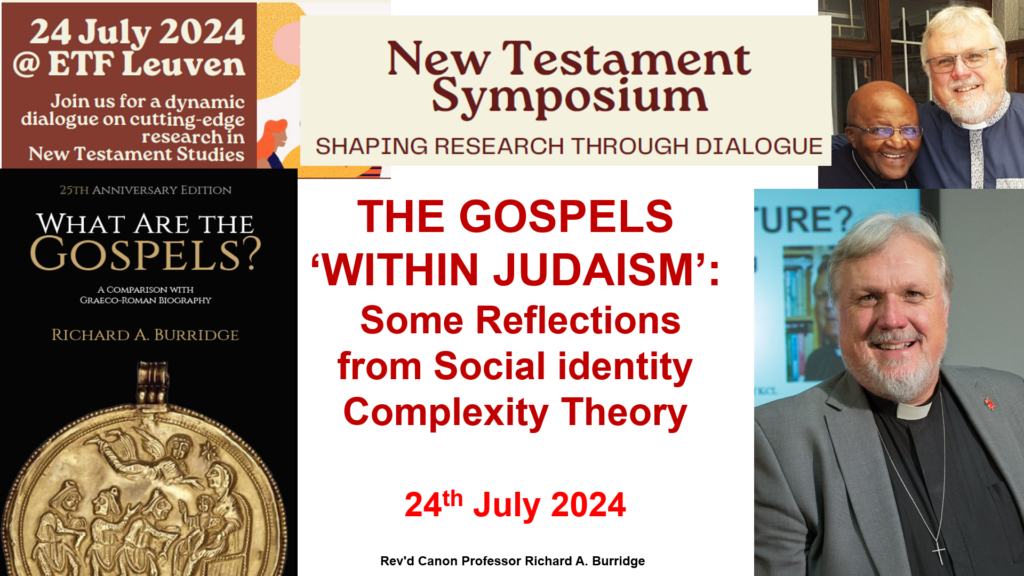THE GOSPELS ‘WITHIN’ AND ‘WITHOUT’ JUDAISM?
Over the last twelve months, I have been involved in at least three conferences debating the place of the gospels within their first-century setting in the eastern Mediterranean under Roman control and Hellenistic influence – especially with regard to their relationship within and without (in both senses of ‘outside’ and ‘lacking’) the various forms of Judaism at the time, especially both before and after the Jewish War and the Romans’ destruction of Jerusalem in AD70.
Thus, I was delighted to participate in the recent New Testament Symposium organised by my old friend and colleague, Professor (Ja)Kobus Kok from ETF at Leuven. Kobus is also a Professor Extraordinarius at his former university, Pretoria, where I am privileged to be a Research Associate in the Department of New Testament and Related Literature as part of Kobus’ team researching into Social Identity Complexity Theory. I first met Kobus some twenty years ago when he was doing his doctoral research under Prof Jan van der Watt at Pretoria where I was often invited to lecture – and it has been good to watch his development into one of our leading NT scholars, both in Pretoria and then his move to Leuven. It was no surprise therefore that some of the other speakers were other colleagues from South Africa, who are over in Europe for the coming international meeting of the Society of Biblical Literature in Amsterdam, and a number of old friends also joined in online from South Africa. But I also appreciated greatly the papers from two of Kobus’ doctoral students – a testament to the research culture at EDF for which he is responsible.

My only regret was that I was unable to get to Leuven in person myself, having visited Kobus there only a few weeks ago – and so not only did I miss the fellowship and further conversation after the formal sessions, but also the lunch out together with a tour round the old city. My own paper was the latest version of my research and thinking about the place of the Gospels within the first century syncretistic milieu of the Hellenistic-Graeco-Roman-Jewish society in the eastern Mediterranean during the second half of the first century. This paper followed on from two previous earlier versions at the Mabalingwe Conference in South Africa last July (also organised by Kobus), and the 13th Conference of Biblical Studies at the Pontifical Faculty of Theology, Palermo, Sicily, in March 2024, on ‘The texts of the New Testament “within Judaism”: Questions of definition and interpretations’. This was organised by Professor Marida Nicolaci of the Pontifical Institute, who was a wonderful host.

Having spent most of the last forty years (!) working on the Graeco-Roman setting of the gospels, especially their literary genre as a type of ancient biography, I have found the recent work of the new school within NT studies of “Within Judaism” both fascinating and challenging. This new trend has grown out of the hugely important work done recently on setting Jesus and Paul within their context in Second Temple Judaism, especially in the decades before the destruction of Jerusalem and the Temple in AD70, following the seminal work of Geza Vermes, WD Davies, EP Sanders, Jimmy Dunn and Tom Wright and many others. It was a great privilege to debate it all in Palermo with some of the leaders of this new movement such as Professors Anders Runesson of Oslo and Gabriele Boccacini of Michigan.

The wide range and high level of the papers at the Palermo Conference in March 2024
However, I found myself in a great debate with them at the Palermo conference in their attempt to claim that the gospels are ‘Jewish texts’, especially after decades of my work on their Graeco-Roman literary genre! I have always viewed the Roman empire in general as a very mixed and syncretistic society, unlike the attempts by the past British empire or present American hegemony to impose their cultures on the world . . . In taking this mixed view, I was particularly encouraged by the paper from Professor John Barclay of Durham. Subsequently, I have also been learning much from Kobus Kok’s interest in Social Identity Complexity Theory, particularly with regard to how individuals and groups have a mixture of identities – linguistic, cultural, religious, philosophical, political, racial and ethnic – which can operate all together in a ‘nested’ kind of way.

The start of my powerpoint accompanying my paper for the Leuven Symposium
It seems increasingly to me that this is a much better way to think about the identity of the first believers in Jesus as Messiah and Christ, drawn as they were from Jewish and Gentile backgrounds with a wide variety of languages, ideas, cultures and beliefs – just look at the way the author of Mark is clearly still thinking in his mother-tongue of Aramaic with all sorts of Semitic ways of expressing himself, yet completely fluent in speaking and writing in both a Greek genre and Greek language, albeit with his recognisable accent. This became very clear to me while I was producing my translation of the Rough Mark, and all the reactions to its London premiere, which can also be watched here on my website.
So now the task for me this summer is to write up this paper in a full academic way for publication, hopefully sometime early next year – watch this space!